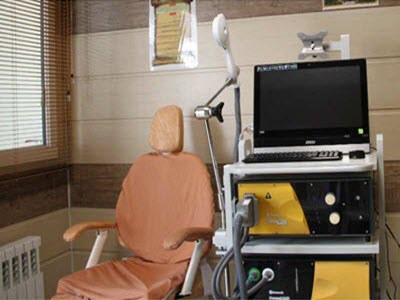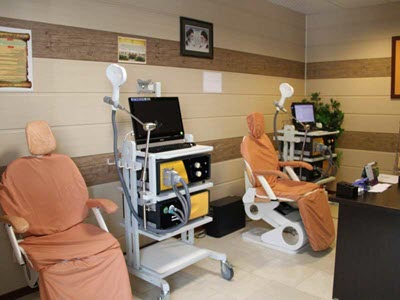Diagnostic and therapeutic technique r.TMS
r.TMS history
We call the process of magnetic stimulation of the brain from the skull as r.TMS, which stands for repetitive transcranial magnetic stimulation.
This technique was introduced in the mid-80s as a therapeutic and diagnostic tool by Barker et al.
The r.TMS technique is a safe and non-invasive way to stimulate the cerebral cortex. This technique does not require anesthesia and has no complications.


The r.TMS technique was initially used to investigate the central motor pathways and the excitability of the cerebral cortex. This technique is a safe and non-invasive way to stimulate the cerebral cortex that does not require anesthesia and has no complications. It should be noted that the r.TMS device is approved by the American Food and Drug Administration (FDA).
r.TMS has various applications. This technique has diagnostic and therapeutic applications in various specialized fields such as neurology, epilepsy, psychiatry, physical medicine, and rehabilitation. For example: some applications of r.TMS include: treatment of depression disorders, obsessive-compulsive disorder, mental complications caused by severe stress such as seizures and PTSD, etc., Parkinson's, schizophrenia (negative symptoms and auditory hallucinations), panic attacks, neurological disorders such as chronic pain, migraine, epilepsy, stroke, and internal disorders such as treatment-resistant tinnitus.
What is r.TMS
The term r.TMS stands for repetitive transcranial magnetic stimulation, which refers to a non-invasive method for brain stimulation applied over the scalp. It is based on the principle of electromagnetic induction using an insulated wire coil. This coil is placed on the scalp over a specific area of the brain involved in the manifestation of psychiatric or neurological symptoms. The coil generates short-duration magnetic pulses that easily and painlessly pass through the scalp, inducing a current in the targeted nerve cells. The result is the regulation of blood flow, neurotransmitter transport, and repair of damaged cells in the affected areas. In other words, r.TMS therapy influences the electrical activity of the brain through magnetic pulses. These magnetic pulses, harmless and painless as they pass through the skull and scalp, elicit currents in the target neurons based on the induced magnetic parameters. These currents can have either excitatory effects (such as those used in depression) or inhibitory effects (such as those used in anxiety disorders).




Benefits of r.TMS therapy
- Regulating blood flow to the desired areas of the brain and repairing damaged cells.
- Regulating the transmission of chemical mediators in the brain, which is effective in mental and motor activities.
- Repairing damaged cells, such as cells affected in diseases like Parkinson's and Alzheimer's, visual neurons in cases of glaucoma , and neurons damaged due to various substances including methamphetamine use (crystal).
Explanation: The use of methamphetamine initially disrupts blood flow and causes vascular lesions, especially in the frontal and prefrontal regions of the brain, which are the centers of will, decision-making, reasoning, abstract thinking, and evaluating the results of our actions, ultimately leading to cellular damage and even cell death. - Significant efficacy (based on clinical research results, the therapeutic effect of rTMS is similar to pharmacotherapy and electroconvulsive therapy).
In short, the benefits of r.TMS are as follows:
• Rapid therapeutic effects
• Non-invasive treatment
• Treatment is performed superficially and does not require hospitalization.
• Possibility of therapeutic efficacy for treatment-resistant individuals
• Significant effects in the treatment of severe depression
• Treatment parameters vary for each patient, and treatment protocols are based on the specific diagnosis of the individual patient.
Those who cannot do r.TMS:
• Individuals with eye and dental implants, and dental metal crowns
• Those with dental PINs
• Individuals with a history of seizures
• Individuals with cardiac pacemakers and stents
• People with platinum and other metals in their head and neck
• It is preferably avoided during pregnancy.
When is r.TMS used?
In depressed patients who have not responded well to a course of medication or psychotherapy, r.TMS can be prescribed as an adjunctive treatment. The effectiveness of this method in other psychiatric disorders such as obsessive-compulsive disorder, anxiety disorders and auditory hallucinations, negative symptoms of schizophrenia that have been resistant to drug treatment has been confirmed in numerous articles. The effectiveness of r.TMS in other neurological areas is also under investigation, such as insufficiency of blood vessels in the brain and Parkinson's disease, etc.
Treatment process with r.TMS
• This therapeutic method can be implemented in both outpatient and inpatient settings and is prescribed in multiple treatment sessions. In summary, rTMS therapy mainly consists of two therapeutic phases:
1. The active phase, comprising 20 to 30 treatment sessions over a period of 2 to 3 weeks.
2. Maintenance therapy, which can be administered weekly or every ten days for 5-12 months depending on the patient's condition.
Step one: Patient education regarding the therapeutic effects of this treatment method.
Step two: rTMS sessions are determined based on test results and psychiatric evaluation and are conducted under the supervision of an rTMS therapist and a psychiatrist. During each treatment session, the patient sits on a specially designed chair (similar to a dental chair). The patient is asked to remove all magnetic-sensitive objects (such as credit cards, jewelry in the head and neck area) before starting the treatment process. If possible, ear protection (earplugs) is provided to prevent potential damage from the pulsating sound or magnetic waves. The operator positions the patient's head appropriately, and the coil device's parameters are measured on the targeted brain area. Then, the motor threshold of the patient is determined, which is the minimum magnetic power required to induce contraction in the patient's hand, varying from person to person. This action is performed by adjusting the device to generate a single pulse. Determining the motor threshold enables the psychiatrist to tailor the treatment program to each individual so that the patient receives an appropriate amount of magnetic energy, neither more nor less than necessary to produce therapeutic effects.
Step three: Patient interaction. Patients can easily express any questions or concerns they have about their condition. We encourage patients to find ways to feel more relaxed during rTMS sessions. The patient's psychological state is recorded in their file after each treatment session or after several treatment sessions and communicated to the treating physician.
When will the results of the treatment appear?
In depression, typically results are observed after two weeks (10 sessions) of treatment. However, in some cases, symptom reduction may appear in the third week of treatment. The patient's condition is continuously evaluated during treatment. The progress of improvement is assessed through various psychological measurement scales. Patients generally need to undergo treatment for approximately 5 to 12 months to sustain therapeutic effects, although the duration may vary among patients. The maintenance treatment period usually covers half of the initial treatment period. The duration of treatment varies depending on the protocol used. In some conditions like obsessive-compulsive disorder, symptom reduction may occur in the third week of treatment.
Head of the unit: senior psychology expert and certified r.TMS technician Mrs. Nazanin Hosseini
Hours of attendance: every day except holidays from 8:00 am to 2:00 pm by appointment